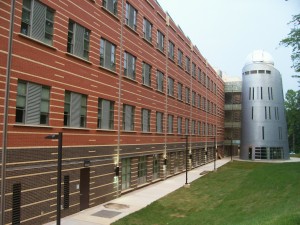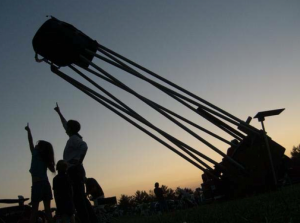Key information for official sites with agreements:
- Camp High Road is open unless specified on Camp High Road specific page
- C.M. Crockett is open only during periods specified on the Crockett specific page
- Meadowkirk observing requires explicit permission. See Meadowkirk page for details
- Sky Meadows State Park is open for vetted volunteers only unless posted on the Sky Meadows specific page
- Spruce Knob Mountain Center: See site specific page or contact site coordinator for availability
Image Processing Party Saturday July 12 from 1-5 pm at the Thomas Jefferson Library in Falls Church. No agenda, just hanging out and processing data. So come when you like and leave when you like.
Okay, on to the pretty pictures. I seem to be specializing in “planetary” stuff. This time the planetary nebula is M76, the Little Dumbbell Nebula. I shot this last fall, but only got around to being satisfied with my processing now. I still find capturing images easier than processing them. The images were taken with a CPC1100 using an SXVR-H694 camera and narrowband filters from my little dog-servatory in Dunn Loring. I processed both a tricolor – H-alpha, Sulfur-II and OIII filters – and a bicolor version, using just Ha and OIII. This is 59 hours of data. No, really. I’m still not sure exactly how that happened, except that when you’re already setup to acquire a target, acquiring it again the next night doesn’t take much extra work, especially when you can sleep through it. 🙂
The planet once again is Mars, which is getting really, really small. But I imaged it three times over the last few weeks. The one from June 6, showing Syrtis Major and clouds filling the Hellas basin, is the best.
In the northern hemisphere, the longest day of the year when the Sun is farthest north. The summer solstice marks the first day of the season of summer. In the southern hemisphere, this is your winter solstice, marking the shortest day of the year. The declination of the Sun on the (northern) summer solstice is known as the tropic of cancer (23° 27′).
http://scienceworld.wolfram.com/astronomy/SummerSolstice.html
Saturn rules the summer sky, but on this night, the ringed planet truly takes center stage. When it reaches opposition (its closest approach to the Earth), Saturn will be bright and fully illuminated by the Sun. You may even notice that its rings look brighter than usual thanks to a phenomenon known as the Seeliger Effect. Take it all in! Saturn’s rings will be visible in even small aperture telescopes.
A medium-sized or larger telescope will allow you to see Saturn’s rings and a few of its brightest moons.

Our meetings on the second Sunday of the Month, The events are normally held evening at 7:00 pm in Research Hall Room 163 on the campus of George Mason University.
Our meetings web page, has directions and additional details.
We look forward to seeing you on Sunday evenings!

Our meetings on the second Sunday of the month, online.
Our meetings web page, has additional details.
We look forward to seeing you on Sunday evenings!

